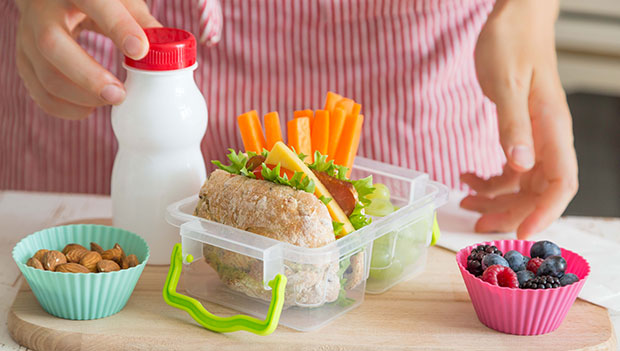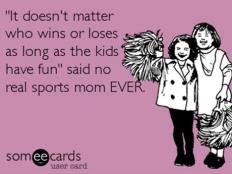
Preschool and Kindergarten Lunch | Best Lunchbox for Kids | Healthy Snacks for Kids | Best Water Bottle for Kids | Best Vitamins for Kids | Best Probiotics for Kids | Best Melatonin for Kids | Best Thermometer for Kids | Best Deodorant for Kids | Best Sunscreen for Kids
One of the most frustrating parts of parenting is feeding the kids, right? It feels like one of those never-ending tasks like doing the laundry, washing the dishes, and paying the rent—you can get it taken care of for now, but you’ll have to do it again in a month, a week, or an hour. It’s just one of those facts of life and it can feel futile.
There are many ways to streamline the planning and execution of healthy snacks for kids, from packing ahead of time to allowing your child some choice in the matter. The path you take will depend on your life's specific circumstances. The main thing to remember is that this does not require overthinking. A food item has exactly the same nutritional breakdown, whether it's eaten in the morning, in the late afternoon, as a bedtime snack, or at two in the morning with a melatonin gummy chaser.
Who Am I?
Who am I to give you nutritional advice for your children? Why should you come to me for healthy snack ideas for kindergartners? Firstly, I am a mom—a mom of twins. I've been doing this snack thing for the past decade. I am also a registered dietitian who is super concerned about your child's nutrition—not only the nutrition in their lunchbox or on the table but the nutrition in their head. How do they relate to food? More importantly, what are they going to be selecting and eating when you're not looking?
The point of child nutrition is to instill a love of food or even more, a curiosity about food—the kind that leads them to the garden or the kitchen to experiment. We want children’s curiosity to link them to their past, grounding them in the self-awareness that has proven to improve self-confidence. Are these high expectations to have of a snack? Maybe, but I think you’ll be pleasantly surprised.
Should Kids Be Eating Snacks Anyway?
Nutrition media (read: Facebook posts from random people) will lead you to believe that snacking is bad. It is not helpful to label the act of eating, or specific food items, as "good" or "bad" and snacks are necessary, particularly for the under-18 set. Kids need to eat every three to four hours. This writer is 40 years old and is still on the three-hour plan.
Your stomach is the size of your fist. Your child's stomach is also the size of their fist. But kids also need a serious amount of calories, especially while going through a growth spurt. They will digest that fist-size amount of food quickly and need to fill up the tank again, which is the purpose of a snack. By delaying eating, the child experiences a hunger that gets bigger and bigger. This growing hunger is distracting and may actually cause them to eat less than they need: If that feeling of hunger is overwhelming on a sensory level, that child might not have an interest in eating when given the opportunity! A snack would help the child stay comfortable between and during larger meals.
What is a Snack?
This seems like a straightforward question, but it can be tricky to navigate through the advertising campaigns telling us to just “eat a Snickers” when you’re hungry. A Snickers might take the edge off for a moment, but does it really work as a snack?
A snack is a miniature meal. It gives back to the body by providing important nutrition while also being tasty and enjoyable. Dessert, like a candy bar, is something that tastes good but doesn't give back to the body. Dessert is something to be enjoyed purely for the pleasure of the experience. A Snickers is not going to do the trick when what you need is a small meal to refuel your body and mind.
There are different kinds of hunger and it's important to take a moment to recognize them. Meal hunger requires a meal and if you try to substitute a snack when what is really needed is a meal, it might actually increase hunger! Snack hunger is smaller and can be demolished with an apple and peanut butter or pretzels and hummus.
What is "Healthy?"
As an anti-diet dietitian, I take a macro view of the concept of the word “health.” Health is not only physical, as much of the medical media may have you believe. A holistic approach to health includes emotional, environmental, spiritual, mental, and social factors. What is healthy in one context may not be healthy in another.
For example, a parent might think cookies are unhealthy but imagine everyone eating them at a birthday party. In the context of the party, there is a lot of "health" going on: As the kids play, they work on their social health, positively impacting emotional and mental health at the same time. Laughing together is healthy! Labeling those cookies as "unhealthy" is limited and not quite accurate when you consider the whole picture.
By making the choice to refer to food by its name, rather than by a charged label such as "unhealthy," the child can take a neutral and curious approach to the food. This results in a child who can listen to and honor their own body and its hunger and fullness cues. The long-term impact of this kind of self-awareness is an adult who maintains that essential mind-body connection rather than listening to the latest nutrition news! This adult will be more willing to enjoy a mindful food experience rather than the all-too-common food guilt that so many of us have been lugging around.
What to Look For
- Can the child access it? Kids want independence. They thrive on it. So just like with lunch boxes at school, the ideal snack will provide the child with an opportunity for independence. When this snack is provided while away from home, that means an easy-to-open package or container.
- Is it tasty? If they are not going to eat it, the amount of nutrition doesn't matter at all. Snacks are more commonly made of familiar items like pretzels and cheese. Snack time at home is a great time to try something new, but when at school or on a trip, familiar items may be better appreciated.
- Is it appropriately filling? A snack should be a small meal that tides you over until the next full meal. If a snack winds up being bigger than anticipated, that's okay—the child will naturally adjust their intake at the next meal. They won't be as hungry. Consider the child's activities, as well. An orange and a cheese stick might be a great idea for an easy morning, but it certainly won't cut it during afternoon soccer practice. It's better to provide too much rather than too little.
- Is there a mix of nutrition? The best snack is going to have two or more of the following: protein, fiber, fat, and carbohydrates. By using any of these in combination, your kiddo is more likely to stay full until their next meal. It's also best to avoid calling these foods by those industrial-sounding names. "Let's sit down to a nice plate of protein" doesn't exactly inspire fond memories in the making. An apple is an apple, a brownie is a brownie.
What to Avoid
- Single macro-nutrient snacks: Apples are great. They are also not filling on their own. Pair these with a fat, such as nut butter or cheese in order to round them out. Pretzels are tasty but follow the same principle. Some hummus or guacamole would be a great addition to create a more satisfying snack.
- Dessert: Snacks give back! A snack can definitely contain something sweet. There is no problem at all with the chocolate in your trail mix. It's best if that bite of sweetness comes in a larger nutritional context, like alongside roasted and salted nuts!

Making It Easy
It's no joke being a parent in the age of social media. The amount of information available is amazing and frightening. Social media posts about perfect meals and snacks can leave any parent feeling a bit blue.
Here are some essential tips:
- It doesn't have to look like a picture. It can be a “delicious mess.” Think about it—a big pile of nachos is only pretty because you know how good it's going to taste. Getting the perfect picture-ready plate might also mean having a screaming kid in the background—or even one who is wandering out the front door...
- Fresh is great. So is frozen. Pssst… so is canned. Don't make things too complicated. Incorporate convenience items where you can, including using veggie and fruit trays to help make snack-prep super easy.
- On that same note, not everything has to be homemade. I promise. Many packaged snacks are fortified with nutrients that may not be included in the homemade version.
Off-loading the Job
Back to giving the kids some responsibility: There are a few ways to incorporate the kids, from having them pick their own snacks from organized (okay, semi-organized) bins to having them make the whole thing while you watch Great British Baking Show and savor your coffee.
When kids are tiny, maybe up to age three or four, parents should pack their food. After that age, parents can start putting snacks into bins and asking the child to add two or three (or more) to their own lunch. One idea is to provide a formula to their child. For example one fruit, one veggie, and one packaged snack. Similarly, with lunch, they may pack a main dish and one to two sides. Giving the job to the child brings them into the plan, resulting in a child who is more excited about eating what they packed.
My Kid Won't Eat an Apple
Parents often report that their child either eats way more at school or way less. If a child is sensory sensitive, the classroom or cafeteria environment might be too much for them. It may overwhelm their senses and leave them without an appetite. For others, the sight of other kids enjoying their food will encourage them to increase their intake. If your child is eating much less than you would usually anticipate, ask some gentle questions to get to the root of it.
So Many Ideas!
This list shows example combinations of food options from different macronutrient categories. The idea is that you pick two or three items from each category to create a satisfying snack. If your kids are four years old and up, you can also ask for their input. At this age, they can begin to understand that they are choosing something to be eaten a little while later. Earlier than this, they will expect to eat the snack right away.
Ready for a list of ideas? Here you go!
- Walnut cookies and apple slices
- Mini muffins and a cheese stick
- Pretzels and applesauce
- Crackers with dip (nut butter, guacamole, vegan queso)
- Veggie slices with dip, like this Spinach Pesto Hummus
- Onigiri (rice balls) with tuna salad
- Fruit kebab with yogurt
- Granola bar and cheese cubes
- Crunchy roasted garbanzo beans and a smoothie pouch
- Baked sweet potato fries, tahini dressing dip, and grapes
- Mini cucumber and cream cheese sandwiches
- Melon balls and cottage cheese
- Soft pretzel and roasted vegetable dip
- Ricotta and berries
- Watermelon slices and mini cheese wheel
- Fruit leather and nuts
- Banana and goldfish crackers
- Mandarin and pretzels
- Apple chips and cottage cheese
- Ants on a log–celery with cream cheese and raisins or dried cranberries
- Nachos—tortilla chips with mild salsa and cheese
- Oatmeal breakfast cookie and yogurt
- DIY yogurt parfait: fruit, yogurt, and granola
- Black bean brownie and strawberries
- Turkey and cheese roll-up
- Cottage cheese mini pancakes
- Frozen yogurt pops
- Chia pudding and fruit
- Larabars (or this copycat recipe)
- Homemade, nut-free fruit and seed bars
Preschool and Kindergarten Lunch | Best Lunchbox for Kids | Healthy Snacks for Kids | Best Water Bottle for Kids | Best Vitamins for Kids | Best Probiotics for Kids | Best Melatonin for Kids | Best Thermometer for Kids | Best Deodorant for Kids | Best Sunscreen for Kids









Discuss This Article